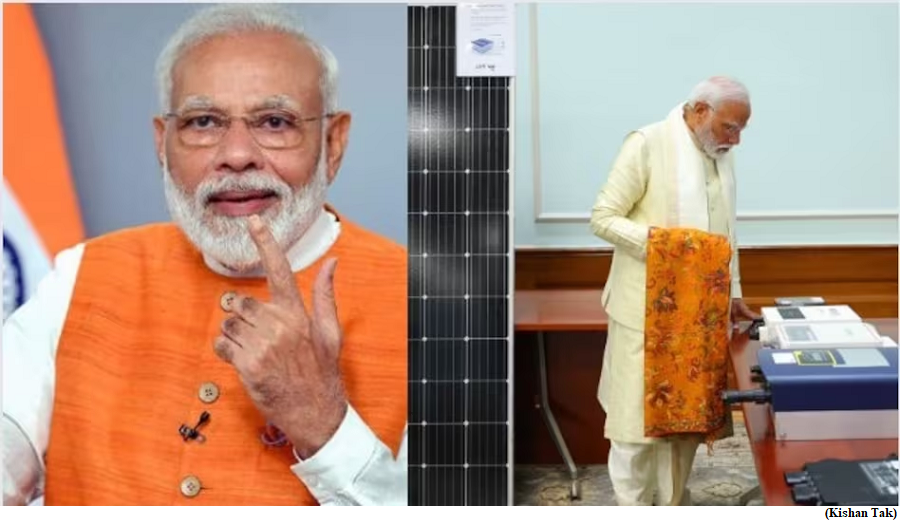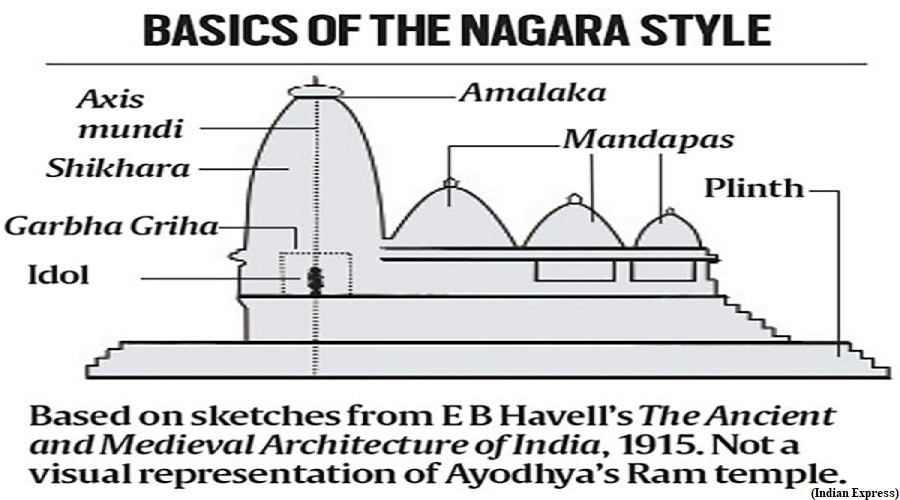Pradhan Mantri Suryodaya Yojana (GS Paper 3, Economy)

Why in news?
- Recently, the Prime Minister announced the ‘Pradhan Mantri Suryodaya Yojana’, a government scheme under which one crore households will get rooftop solar power systems.
Background:
- In 2014, the government launched the Rooftop Solar Programme that aimed to achieve a cumulative installed capacity of 40,000 megawatts (MW) or 40 gigawatts (GW) by 2022. However, this target couldn’t be achieved. As a result, the government extended the deadline from 2022 to 2026.
- The Pradhan Mantri Suryodaya Yojana seems to be a new attempt to help reach the target of 40 GW rooftop solar capacity.
What is the Pradhan Mantri Suryodaya Yojana?
- It is a scheme that will involve installing solar power systems at rooftops for residential consumers.
- The scheme would help not only reduce electricity bills of the “poor and middle class”, but also push India’s goal of becoming self-reliant in the energy sector.
What is India’s current solar capacity?
- According to the Ministry of New and Renewable Energy, solar power installed capacity in India has reached around 73.31 GW as of December 2023. Meanwhile, rooftop solar installed capacity is around 11.08 GW as of December 2023.
- In terms of total solar capacity, Rajasthan is at the top with 18.7 GW. Gujarat is at the second position with 10.5 GW. When it comes to rooftop solar capacity, Gujarat tops the list with 2.8 GW, followed by Maharashtra by 1.7 GW.
- The solar power has a major share in the country’s current renewable energy capacity, which stands at around 180 GW.
Why is an expansion of solar energy important for India?
- India is expected to witness the largest energy demand growth of any country or region in the world over the next 30 years, according to the latest World Energy Outlook by the International Energy Agency (IEA).
- To meet this demand, the country would need a reliable source of energy and it can’t be just coal plants. Although India has doubled down on its coal production in recent years, it also aims to reach 500 GW of renewable energy capacity by 2030.
- Therefore, it is essential to expand solar power capacity, the country has increased it from less than 10 MW in 2010 to 70.10 GW in 2023.
What is the Rooftop Solar Programme?
- Launched in 2014, the scheme aims to expand India’s rooftop solar installed capacity in the residential sector by providing Central Financial Assistance , the financial assistance to the eligible projects as per MNRE Guidelines and incentives to DISCOMs (distribution companies).
- The programme’s goal is to increase rooftop solar installed capacity to 40 GM by March 2026 and it is currently in its second phase. Owing to the scheme, the country’s rooftop solar has increased from 1.8 GW as of March 2019 to 10.4 GW as of November 2023.
- A consumer can avail of benefits of the scheme through DISCOM tendered projects or through the National Portal.
- On the National Portal, the consumer has the choice to select any vendor and choose the brand and quality/efficiency of solar equipment. The DISCOMs role is limited to issuing of technical feasibility approval, installation of net-meter and inspect the system.
- After installation and inspection of the system, the subsidy is sent directly to the bank account of the consumer.
Income generation:
- Moreover, surplus solar power units generated from the rooftop solar plant can be exported to the grid as per the metering provisions issued by respective SERCs (State Electricity Regulatory Commissions)/JERCs (Joint Electricity Regulatory Commission). The consumer can receive monetary benefits for the surplus exported power as per the prevailing regulations.
What is the Nagara style, in which Ayodhya’s Ram temple is being built
(GS Paper 1, Culture)
Why in news?
- The Ram temple in Ayodhya was inaugurated on January 22. Chandrakant Sompura and his son Ashish, have designed the complex in the Nagara style of temple architecture.

Nagara style of temple:
- The Nagara style of temple architecture emerged some time in the fifth century CE, during the late Gupta period, in northern India.
- It is seen in juxtaposition with the Dravida style of southern India, which too emerged in the same period.
Distinguished by a towering shikhara
- Nagara temples are built on a raised plinth, with the garbha griha (sanctum sanctorum), where the idol of the deity rests, the most sacred part of the temple.
- Towering over the garbha griha is the shikhara (literally ‘mountain peak’), the most distinguishable aspect of Nagara style temples.
- As the name suggests, shikharas are human-made representations of the natural and cosmological order, as imagined in Hindu tradition.
- Meru, Mandara and Kailasa are the first three names amongst the twenty types of temples described in the early texts, all three are the names of the Mountain, which is the axis of the world.
- A typical Nagara style temple also comprises a circumambulatory passage around the garbha griha, and one or more mandapas (halls) on the same axis as it. Elaborate murals and reliefs often adorn its walls.
Five modes of Nagara architecture:
- Depending on the period and geography, there is a large variation when it comes to what a shikhara looks like, or how it is used in a temple’s design.
- On this basis, Adam Hardy in ‘The Temple Architecture of India (2007)’ identifies five modes of Nagara temple architecture; Valabhi, Phamsana, Latina, Shekhari, and Bhumija.
Evolution:
- The Valabhi and Phamsana are associated with what scholars have classified as Early Nagara Style.
- The Valabhi begins as a masonry rendering of the barrel-roofed (wooden])structure, simple or with aisles, familiar through chaitya halls (prayer halls, most associated with Buddhist shrines). A formalisation of multi-eave towers, wedded to a piling up of slabs, leads to the Phamsana.
- From these modes emerged the Latina, a shikhara which is a single, slightly curved tower with four sides of equal length.
- The mode emerged in the Gupta heartland, was complete with curvature by the early seventh century, and during that century spread across the entire breadth of northern India.
- The tenth century onwards, composite Latinas began to emerge, giving rise to Shekhari and Bhumija styles.
- The Shekhari shape has attached sub-spires or spirelets, echoing the main shape. These may run up most of the face of the shikhara, and be of more than one size.
- The Bhumija, on the other hand, has miniature spires, in horizontal and vertical rows, all the way to the top, creating a grid-like effect on each face. The actual shikhara often approaches a pyramidal shape, with the curve of the Latina less visible.
- Consequently, there is also immense variation within these modes. Temples can even contain multiple kinds of shikharas on top of a simple structure, with the tallest always being on top of the garbha griha.
Comparison to Dravida style:
- The Dravida counterpart to the shikhara is the vimana. There exists, however, a fundamental difference.
- In the Dravida style temples, vimanas are typically smaller than the great gatehouses or gopurams, which are the most immediately striking architectural elements in a temple complex. Moreover, while shikharas are mentioned in southern Indian architectural sources, they refer to only the dome-shaped crowning cap atop the vimana.
- The existence of gopurams also points to another unique feature of the Dravida style — the presence of a boundary wall. Few Nagara style temple complexes are lined with distinctive boundary walls that are a part of the temple’s design.
- This is one of Ayodhya’s Ram temple’s ‘hybrid’ features, although no elaborate gopuram has been built (citing paucity of space), a 732m long wall runs around the temple compound.



